Disclosure: We may get commissions for purchases made through links in this post.
Are you planning to install pavers, and you’re wondering if you can use stone dust between them? You’ve come to the right place because we’ve researched this question and have the best answer right here.
Although there are contractors and internet articles that recommend using stone dust as a bedding and paver joint material, the latest official regulations advise against its use. This means that, no, it cannot be used between pavers.
This might come as a surprise to some because there are contractors that exclusively use stone dust as bedding and joint material for pavers in their patio or walkway projects. Fortunately, we have the complete explanation why the ICPI (Interlocking Concrete Pavement Institute) advises against the use of stone dust in the succeeding sections. Read on!
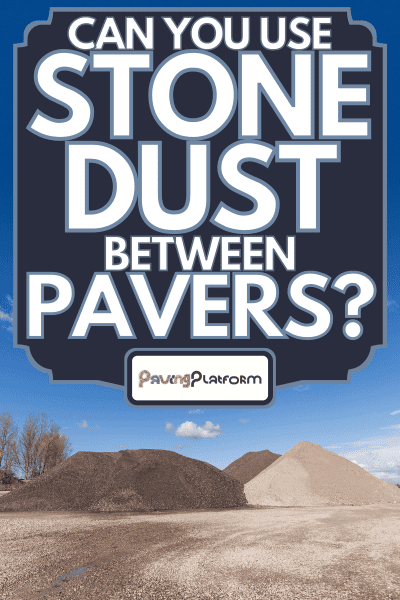
Can you use stone dust between pavers?
Some time ago, paving contractors discovered that they can use stone dust between pavers and even decided to use it as a bedding material instead of bedding sand. And being cheaper than coarse sand has definitely helped its popularity.
Most of these contractors continued to use it for years, never looking for alternative materials. They even started to promote the advantages of using it.
Unfortunately, it can be challenging to identify the damage on pavers that originated from the use of stone dust. Hence, if a customer would call regarding damage on their paver installation, the contractors that installed it will not immediately recognize that the problem came from their use of stone dust.
What are the effects of using stone dust in pavers?
Let’s talk about the effects of using stone dust in paver stones in the succeeding sections.
How stone dust damages pavers
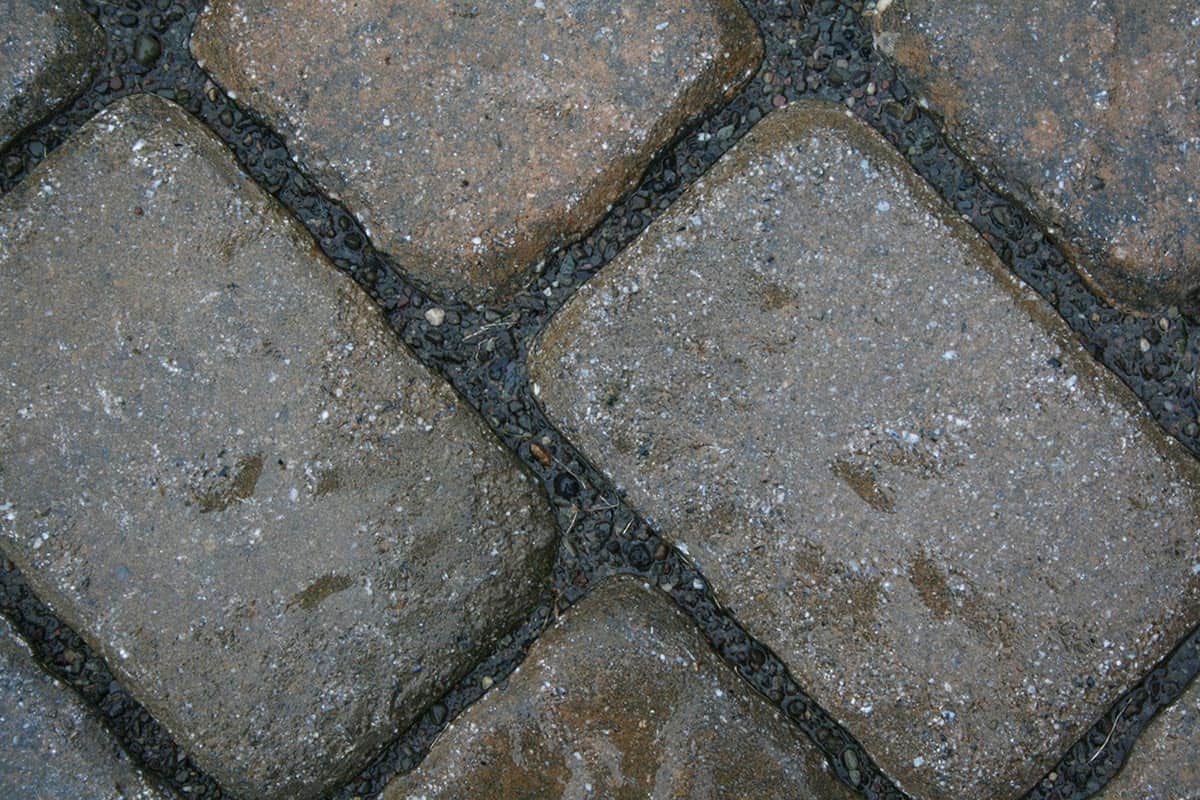
Stone dust is known to harden after exposure to water. Additionally, stone dust holds water instead of letting it drain.
Water trapped by stone dust becomes a problem during the freeze-thaw cycles in most North American states. Water expands when it freezes. Freezing water will shift the position of pavers and can even push the base layer downwards.
If there is enough water trapped in the stone dust between pavers, frozen water can push against pavers and damage them—creating small cracks that slowly weather away the pavers.
Once the ice melts, all the water will take time to drain because stone dust will hold it in. This can soak the pavers from underneath and compromise their structural strength.
Can stone dust cause problems with sealers?
Solvent-based sealers require that there is no moisture present. The presence of moisture when the sealer is applied can cause the sealer to have bad adherence, making an unsightly finish.
Since stone dust retains water and moisture, solvent-based sealers will not work well with pavers that use stone dust as paver joint material.
Can stone dust affect warranties?
Most paver warranties do not cover deterioration or damage due to poor design or poor installation. Their warranties will no longer cover pavers that were installed contrary to the specifications provided by ICPI and NCMA (National Concrete Masonry Association).
Since the ICPI advises against the use of stone dust, using it would void the warranty of your paver stones. Paver warranties can be anywhere from 30 years to a lifetime. To make it worse, some contractors do not tell their clients about this.
What are the best materials to use between pavers?
The right jointing compound (the material you put between your pavers) is important to the overall structural integrity of the pavers. Jointing compounds don’t just fill the gaps between pavers, they also lock the pavers together and protect the bedding layer and the paver base underneath.
A good jointing compound, therefore, should be able to fulfill all these functions.
How to choose the right jointing compound?
Applying the jointing compound is a crucial final step in the installation of pavers. Fortunately, the available jointing compounds to choose from have increased in recent years. This allows homeowners to choose a jointing compound that is right for the specific application of their pavers.
You need to evaluate the project. Determine which of these use cases applies to your project. Then pick the right jointing compound for it.
Pedestrian or vehicular traffic
Pedestrian traffic is a given. However, it is important to determine if your project will see vehicular traffic.
Some jointing materials cannot withstand the torque of moving vehicles on top of them. These jointing compounds are not suitable for pavers on driveways.
Material for the base and bedding
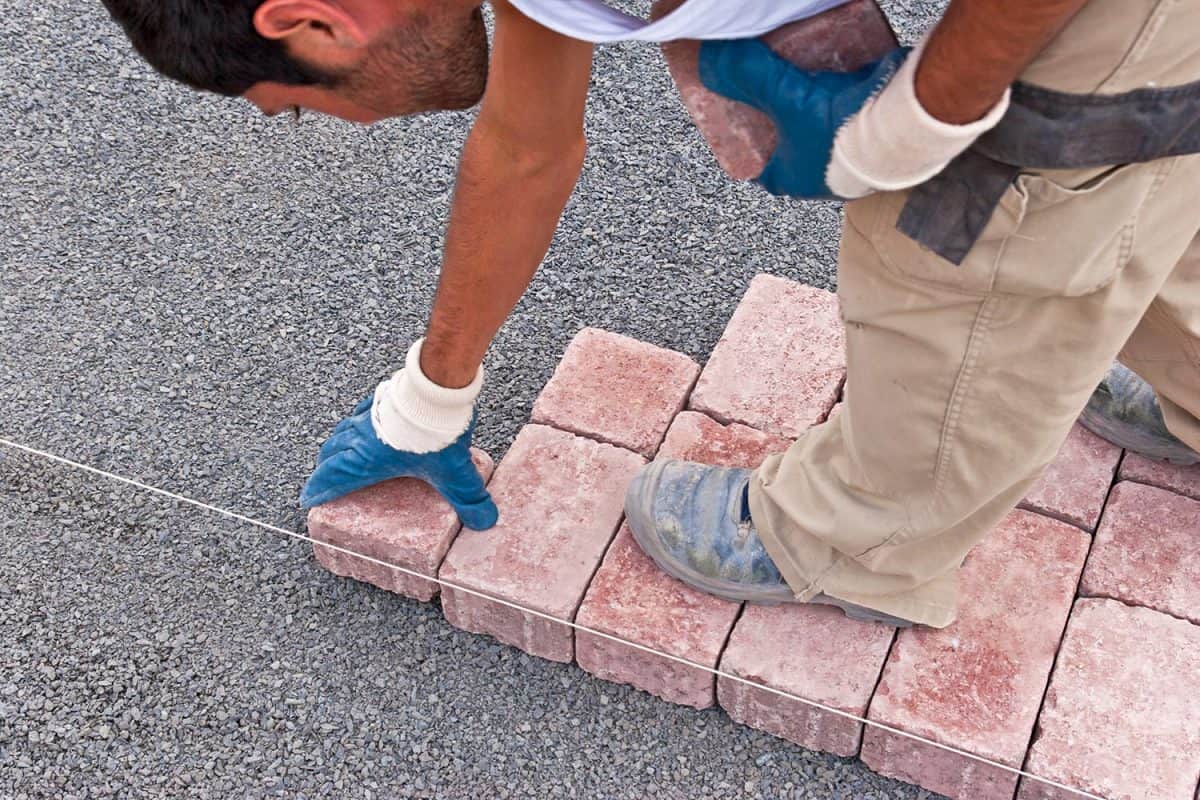
Identifying the material used as your paver base and the bedding for the installed paver is also important in choosing the right jointing compound.
If you used a 3/4" angular crushed stone for the base and concrete sand for the bedding, then the ideal jointing compound to use would be regular jointing sand or polymeric sand.
However, if you used an ICPI-recommended hybrid or open-graded base with 3/4" angular stone as a base and 3/16" angular chips as the bedding material then you’d have more flexibility in which jointing compound to use. The free-draining materials used for base and bedding make it more logical to use a resin-based jointing compound to allow the free flow of water through the joints.
Pavers installed on top of a concrete pad would be best served to use a jointing compound that prevents water from reaching the concrete pad. Polymeric sand would be a good choice for this purpose.
Width of the joints
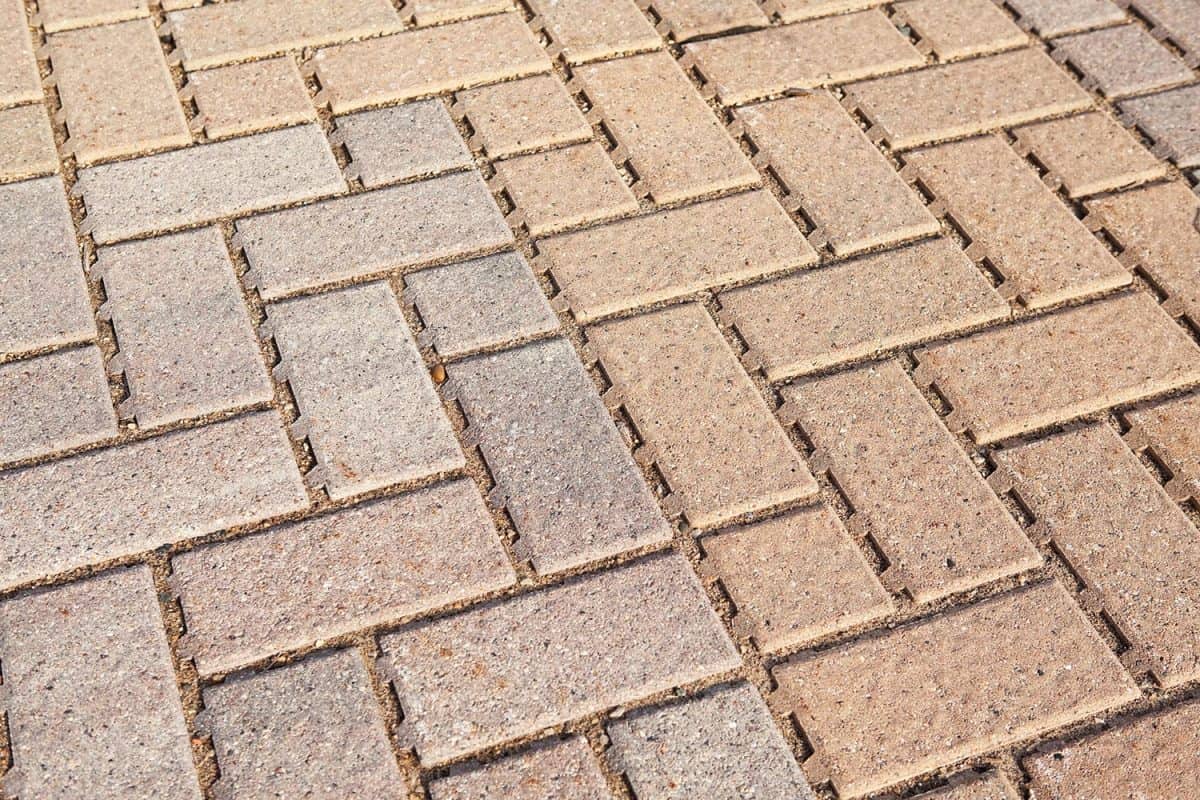
Thin joints require a jointing compound that has fine grains so that they would be able to get into the joints. Fine-grained polymeric sand would be best for this scenario.
Joints with large gaps (1" or larger) can also be filled with polymeric sand. There is specialized polymeric sand that is made for bigger gaps. Additionally, there are resin-based jointing compounds that can be used for larger joints.
However, for any joints larger than 1", it is best to consult the product manufacturer or specifications to know the recommended jointing compounds to be used.
Visual appeal
Jointing compounds look different, and matching them with pavers can affect the overall look of the project. Even the size of the grain can have an impact on the final look. Moreover, some jointing compounds have specific shades to choose from.
This is a minor consideration for some, while there are homeowners that consider this a big factor in their project.
What are the different types of jointing compounds?
Now that you know the different factors to consider in choosing the right jointing compound, let’s get to the different options. We’ll discuss the advantages and disadvantages of each type to help you weigh your options.
Jointing sand
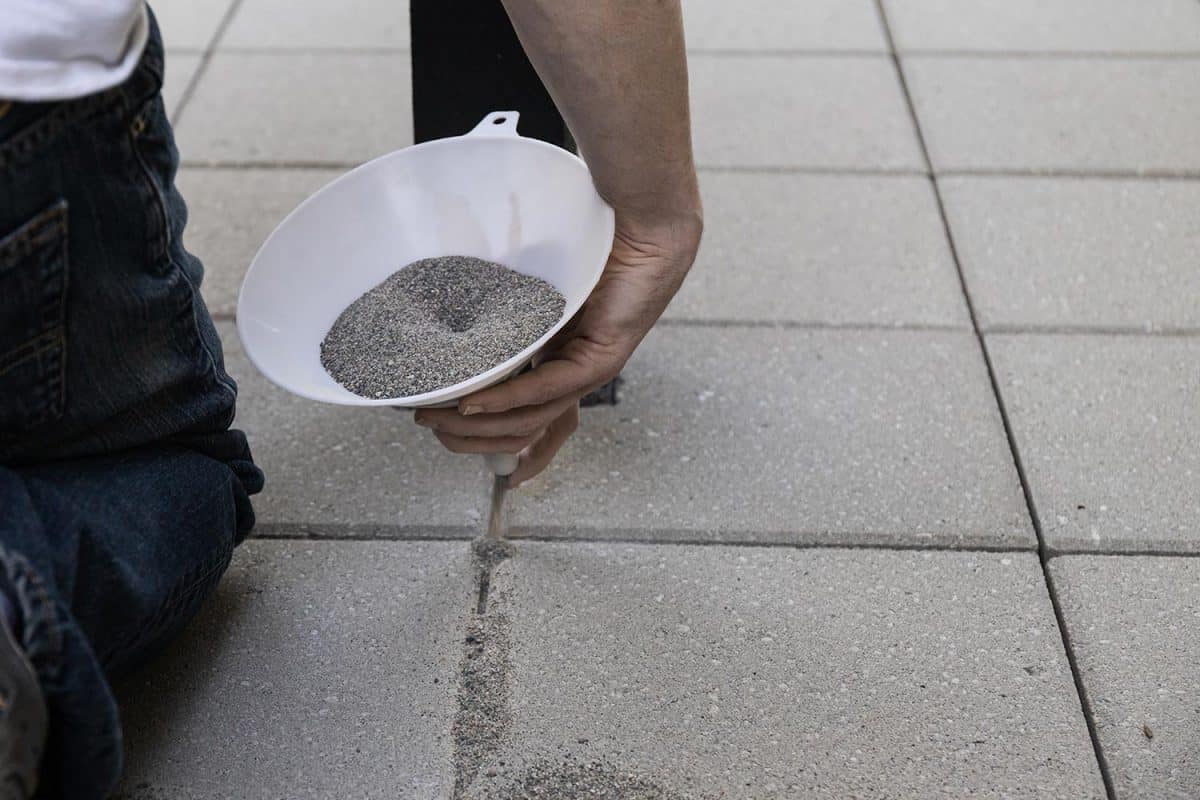
This is the oldest option on the list. Jointing sand is a fine sand grain that has an angular profile instead of curved or rounded. The angled profile helps prevent washout.
The greatest weakness of jointing sand is its vulnerability to insects and weed growth. Regular water flow can easily cause jointing sand to get washed off. These disadvantages can be prevented by using a sealer once everything has been installed.
Unfortunately, most paver manufacturers require a wait time if the pavers are fresh from production. In most cases, this wait time is enough for weed seeds to settle in.
Polymeric sand
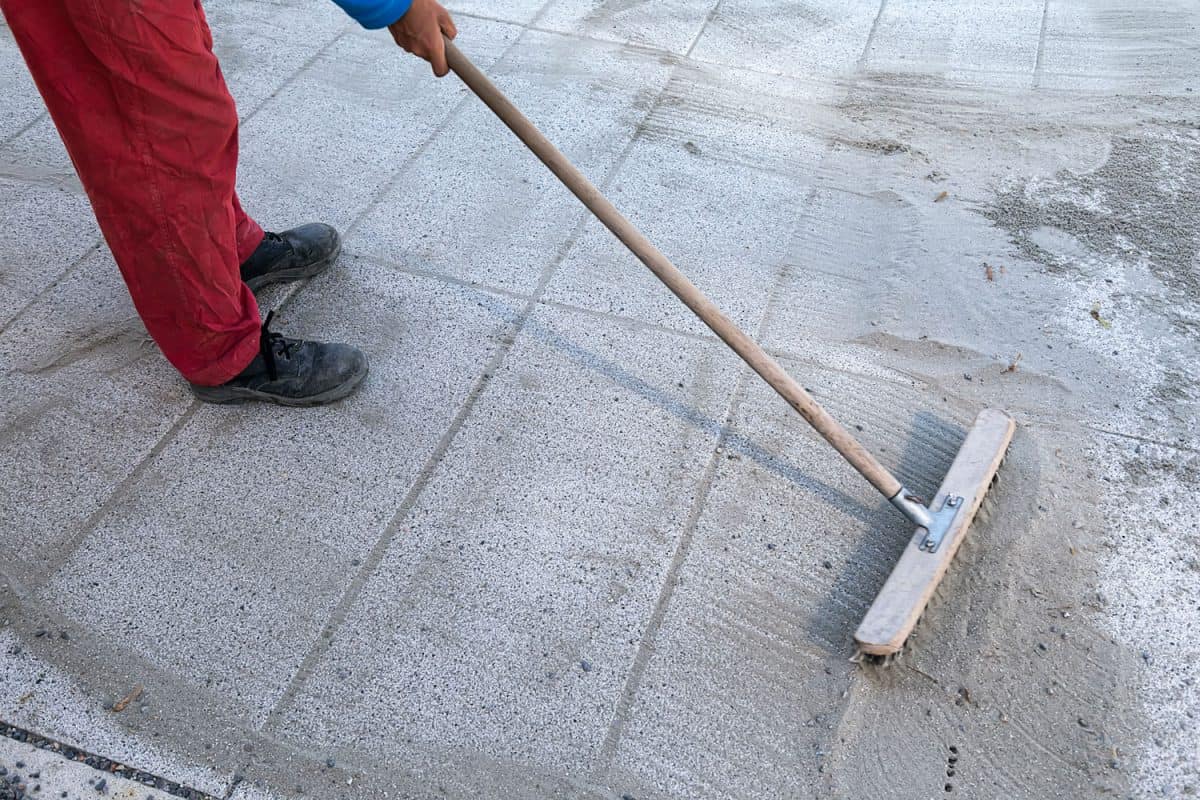
This has become the industry favorite when it comes to jointing compounds for most installations. There is likely specialized polymeric sand available for every conceivable application of pavers. Keep in mind that different polymeric sand types and manufacturers can have different installation and activation methods.
It is important to get the type of polymeric sand that was made for your project—be it a swimming pool patio, driveway, walkway, etc. Follow all manufacturer specifications in the installation and use of polymeric sand or the project could end up in a disaster.
The disadvantage of polymeric sand is that it requires that the pavers and the bedding layer are completely dry prior to installation. Even the moisture of the morning and evening dew can ruin the installation with premature activation. This disadvantage limits the installation timing of polymeric sand.
The Dominator polymeric sand is available on Amazon. Check it through this link.
Resin-based jointing compound
Resin-based jointing compounds are relatively new to North America but have been in use in Europe for some time.
These jointing compounds are usually cured in the air and installed with water to prevent them from curing prematurely. Because of this, one of its distinct advantages is that it can be installed even when it’s raining—unlike polymeric sand.
Moreover, it has a high permeability that allows water to flow through the joints. Thus, these joint compounds are suitable for installations that get a lot of water.
The disadvantage of resin-based jointing compound is that it is best used for patio pavers. It does not have the strength to withstand vehicle traffic. Thus, it is not suitable for driveway installation.
Permeable jointing stone
This is like jointing sand but larger. It is also angular in structure that makes it resistant to getting washed off. This is a good solution for installations that require a highly permeable jointing compound.
Because of its size, it is not suitable for pavers with slim joints.
Conclusion
Using stone dust as a jointing compound for pavers is a dated practice that has been replaced with newer techniques. Research has shown the disadvantage of using stone dust as a jointing compound. Unfortunately, this knowledge has not yet become common.
If you found this article interesting, check these other articles that you might like.


![Vibrant Red Paver Stone Path, Can You Spray Paver Sealer? [How To Apply It]](https://pavingplatform.com/wp-content/uploads/2022/04/Vibrant-Red-Paver-Stone-Path-600x400.jpg)
![Properly laid out red pavers for a garden, Can You Tint Paver Sealer? [And How To]](https://pavingplatform.com/wp-content/uploads/2022/04/Properly-laid-out-red-pavers-for-a-garden-600x400.jpg)
